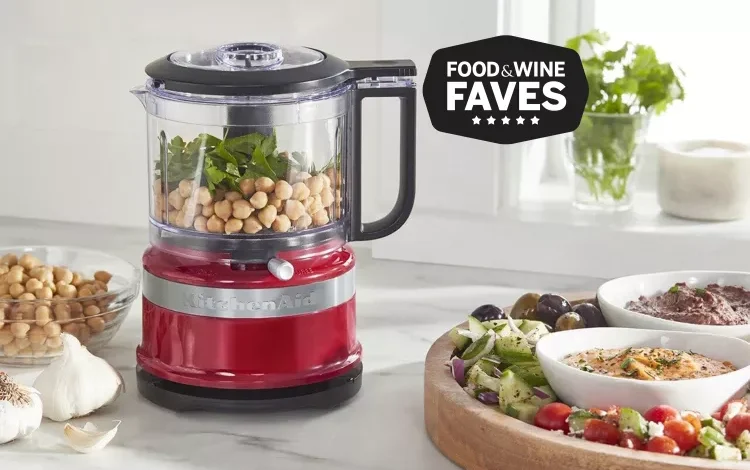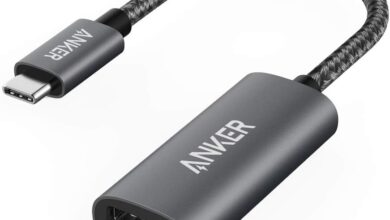Vegetable Chopper The Ultimate Guide to Choosing and Using a Vegetable Chopper
Vegetable chopper

Vegetable choppers are essential kitchen tools designed to simplify the process of preparing food. These devices come in various shapes and sizes, ranging from manual handheld choppers to electric models that expedite the cutting process. The primary purpose of a vegetable chopper is to reduce vegetables into uniform pieces quickly and efficiently, making meal preparation faster and more convenient.
In a busy kitchen, the time-saving benefits of vegetable choppers cannot be overlooked. By utilizing this tool, individuals can significantly decrease the time they spend slicing and dicing. Whether it is for salads, stir-fries, or soups, vegetable choppers facilitate quicker meal prep, allowing cooks to focus on other facets of the cooking process or even on other tasks altogether.
Moreover, these choppers contribute to a healthier lifestyle. With the ease of chopping vegetables, home cooks are encouraged to incorporate more vegetables into their meals, which is vital for maintaining a balanced diet. Fresh vegetables are rich in vitamins and minerals that are essential for overall health. A vegetable chopper also promotes culinary creativity, as it allows for the exploration of various vegetable combinations and preparations.
The advantages of using a vegetable chopper extend beyond mere convenience and health benefits. Many models are designed with safety features to protect users from accidental cuts, making them ideal for individuals of all cooking skill levels. With an array of styles available, selecting the right vegetable chopper can enhance the enjoyment of cooking and streamline the preparation of nutritious meals.
Types of Vegetable Choppers
Vegetable choppers are essential kitchen tools that simplify food preparation, making them popular among home cooks and professional chefs alike. There are primarily two categories of vegetable choppers: manual and electric. Each type offers distinct advantages and disadvantages, catering to various cooking styles and preferences.
Manual vegetable choppers, which include options like hand-held slicers and traditional knife sets, require physical effort from the user. These tools are often less expensive, more portable, and easier to clean compared to their electric counterparts. Among the popular manual choppers is the traditional mandoline slicer, which allows for precision cuts and the ability to adjust thickness. However, the consideration of safety is paramount, as the sharp blades can pose a risk if not handled properly. Additionally, some users may find that manual chopping can be time-consuming, especially when preparing large quantities.
On the other hand, electric vegetable choppers offer convenience and efficiency, allowing users to quickly chop, dice, or mince vegetables at the push of a button. These machines often come with various attachments, enabling a range of cutting techniques, from finely diced onions to perfectly julienned carrots. Electric choppers excel in speed and consistency, making them ideal for those who frequently cook or require quick meal preparation. However, they typically come with a higher price tag, and their reliance on electricity may limit portability.
Choosing between manual and electric vegetable choppers largely depends on individual cooking habits, budget, and space considerations in the kitchen. For those who enjoy a hands-on approach and have limited storage space, a manual chopper may be more suitable. Conversely, for busy individuals seeking efficiency and versatility, investing in a reliable electric model could greatly enhance the cooking experience.
Features to Consider When Buying a Vegetable Chopper
When selecting a vegetable chopper, it is crucial to assess various features that can significantly impact your cooking experience. One of the primary factors is blade quality. High-quality blades should be made from stainless steel, which ensures durability and sharpness. A sharp blade not only makes chopping faster but also enhances the efficiency of the chopper, allowing for consistent cuts across different types of vegetables.
Another important consideration is the size and capacity of the chopper. Depending on your kitchen space and the quantity of vegetables you typically prepare, you should choose a chopper that fits your needs. Smaller models may be ideal for limited counter space, while larger ones can accommodate more significant batches, making them suitable for meal prep or cooking for a larger family.
Ease of cleaning is also a vital feature to consider. A vegetable chopper should be easy to disassemble, allowing for straightforward cleaning after use. Look for models that are dishwasher-safe, as this can save significant time and effort. Additionally, components made from non-stick materials can lessen the chances of food particles adhering to surfaces.
Safety features should not be overlooked either. Choppers that come with secure grips, slip-resistant bases, and protective hand guards can minimize the risk of accidents in the kitchen. Ensuring that you feel safe while operating a vegetable chopper is paramount, especially if you are new to using such kitchen tools.
Finally, consider whether the vegetable chopper comes with any additional attachments or accessories. Some models may include different blade types for slicing, dicing, or julienning, allowing for versatility in meal preparation. Accessories can enhance the functionality and provide greater value, making your cooking experience more enjoyable.
Top Vegetable Choppers on the Market
When it comes to selecting a vegetable chopper that suits your culinary needs, several products consistently emerge as top contenders. These vegetable choppers have earned positive reviews due to their performance, durability, and value for money.
One of the popular options is the Vidalia Chop Wizard. Renowned for its simplicity and efficiency, this chopper features a dual-chamber design that allows for an impressive volume of chopped vegetables in a short period. Users appreciate its stainless steel blades that ensure precision cutting and its easy-cleaning surfaces. The price point typically hovers around $20, making it an economical choice for many home cooks.
Another standout is the Mueller Austria Onion Chopper. This model not only chops but also slices vegetables with utmost ease. It boasts a robust design that prevents slipping, and its convenience is heightened with the included storage container. Priced at approximately $24.97, it has gathered a myriad of positive customer reviews, praising its ability to handle various vegetable textures from soft tomatoes to hard carrots.
For those seeking a compact option, the Black+Decker Electric Vegetable Chopper is worth considering. This electric chopper offers quick processing with just the push of a button, making it ideal for those who may not have the strength for manual chopping. With a price around $29.99, it has been particularly favored for its time-saving capabilities, especially in busy kitchen environments.
Finally, the Oxo Good Grips Vegetable is another remarkable contender. This product combines functionality with a sturdy design, making it a favorite amongst professional chefs and home cooks alike. Its clear body allows users to monitor their chopping progress easily. It is generally priced at $31.95, with customers frequently highlighting its ergonomic handle that enhances ease of use.
These aforementioned vegetable choppers represent some of the best options on the market, catering to diverse culinary demands while maintaining a balance between price and functionality.
How to Use a Vegetable Chopper Effectively
Using a vegetable chopper can significantly enhance your meal preparation process, making it quicker and more efficient. To use a vegetable chopper effectively, follow these detailed steps to ensure safety and optimal results.
First, prepare your vegetables. It’s essential to wash your vegetables thoroughly under running water to remove any dirt or pesticides. For optimal performance, trim the vegetables into manageable sizes that fit comfortably into the chopper’s feeding tube. Depending on the model, you may also peel the vegetables if desired, particularly for items like carrots and potatoes.
Next, familiarize yourself with the specific operation of your vegetable chopper. Different models may vary in features, so read the instruction manual carefully. Most choppers operate through a simple mechanism, such as pulling a string or pressing a button. The positioning of the blades is also important; ensure they are securely locked in place before use. This step is vital to prevent injuries and maintain the chopper’s effectiveness.
When you begin chopping, take care to insert the vegetables gently, allowing the blades to do their job without forcing them. It’s advisable to blend different vegetable types for a uniform chop, which not only enhances the presentation but also helps in even cooking. If your vegetable chopper comes with multiple blade attachments, use the appropriate one for the size and type of vegetable.
After you have finished chopping, carefully remove the chopped vegetables from the chopper. Inspect the quality of your ingredients to ensure they have reached the desired consistency. If you notice any uneven pieces, briefly re-chop to achieve uniformity. Lastly, proper cleaning and maintenance of your vegetable chopper will prolong its life. Disassemble all removable parts and wash them immediately after use to prevent residue buildup. Dry them thoroughly before reassembling.
By following these steps, you can maximize the efficiency and effectiveness of your vegetable chopper, ensuring a smooth and enjoyable cooking experience.
Maintenance and Cleaning Tips for Vegetable Choppers
Proper maintenance and cleaning of vegetable choppers are essential for ensuring their longevity and optimal performance. A well-maintained chopper not only operates more efficiently but also ensures food safety by preventing the growth of bacteria. The right cleaning routine involves a few simple steps that can keep your vegetable chopper in excellent condition.
First and foremost, it is important to disassemble the chopper after each use. Most vegetable choppers are designed to be easily taken apart. Begin by removing any detachable components, such as blades and bowls. This disassembly allows for thorough cleaning of all parts and helps to prevent cross-contamination of ingredients.
Once disassembled, rinse each part with warm water to remove any food particles. Use a soft sponge or cloth in combination with mild dish soap to gently scrub the surfaces. Avoid using abrasive materials, as these can scratch the surfaces of the chopper and dull the blades. Additionally, ensure that you pay special attention to areas where food may be trapped, as these spots may harbor bacteria.
After washing, it is crucial to rinse all components well with clean water to eliminate any soap residue. Once rinsed, let the parts air dry completely before reassembling the chopper. This step is vital to prevent moisture buildup, which can lead to rust or mold growth, particularly in metal components.
Finally, when it comes to storage, choose a cool, dry location. Avoid stacking the chopper with heavy items on top, which may damage the blades or other parts. Instead, store it in a drawer or designated container to keep it protected. Regular maintenance and proper cleaning practices will ensure that your vegetable chopper remains a valuable kitchen tool for years to come.
Creative Recipes Using a Vegetable Chopper
Utilizing a vegetable chopper can significantly streamline the process of meal preparation, allowing you to create delicious recipes with greater efficiency. Here, we present a selection of easy and creative recipes that take advantage of this handy kitchen tool.
One of the simplest recipes to start with is a fresh vegetable salad. Begin by chopping cucumber, bell peppers, and cherry tomatoes using the vegetable chopper. Once diced, combine these ingredients in a large bowl with a handful of mixed greens. Drizzle with olive oil and balsamic vinegar for a refreshing dressing. The chopper allows for consistent size pieces, which enhance the presentation and texture of the salad.
Next, consider preparing a classic vegetable stir-fry. Using the chopper, finely slice an assortment of vegetables such as broccoli, carrots, and bell peppers. Heat a pan with a bit of oil, add garlic for flavor, and then toss in your chopped vegetables. Stir-fry for a few minutes and serve over rice or noodles. The quick chopping ensures that all ingredients cook evenly, yielding a vibrant and healthy dish.
For a unique twist, try making a vegetable soup. Utilize the vegetable chopper to dice potatoes, carrots, celery, and onions. In a large pot, sauté the onions until translucent, and then add the remaining chopped vegetables along with vegetable broth. Simmer until the vegetables are tender. The efficiency of the vegetable chopper results in uniform pieces, leading to a well-balanced texture and taste throughout the soup.
In addition to these recipes, a vegetable chopper can also be beneficial for meal prepping. By batch chopping your favorite vegetables, you can store them in the refrigerator for quick access, making it easier to assemble a variety of meals throughout the week. With minimal effort, you can enjoy the versatility and convenience offered by incorporating a vegetable chopper into your culinary routine.
Common Mistakes to Avoid When Using a Vegetable Chopper
Using a vegetable chopper can significantly streamline meal preparation, but beginners often overlook important techniques that can affect both the efficiency and safety of their chopping experience. One prevalent mistake is the incorrect chopping technique. Many users tend to force the vegetables into the chopper without ensuring they are cut down to a manageable size. This can lead to uneven chopping and may even damage the chopper. To combat this, it is imperative to pre-cut larger items and allow them to rest within the device for optimal performance.
Another common error is overloading the vegetable chopper. Users may feel inclined to add as many ingredients as possible to save time; however, this can impede the chopper’s ability to perform effectively. When overloaded, the blades may not adequately process the ingredients, resulting in uneven pieces. It is advisable to chop smaller batches to ensure consistent results, enhancing both texture and flavor in the final dish.
Additionally, neglecting the maintenance and care of the chopper is a critical oversight. Many beginners do not clean the device thoroughly after each use or fail to check for any necessary assembly adjustments. This can lead to wear and tear, potentially compromising the longevity of the chopper. Regular maintenance, including proper disassembly and cleaning, is crucial for maintaining the chopper’s efficiency and safety. Furthermore, users should always refer to the manufacturer’s guidelines for specific care instructions that relate to their model.
By being aware of these common pitfalls and making a conscious effort to adhere to best practices, users can maximize the benefits of their vegetable chopper. Avoiding these mistakes not only improves the cooking experience but also enhances the quality of the meals prepared.
Conclusion and Recommendations
Incorporating a vegetable chopper into your culinary routine can significantly enhance your cooking efficiency and enjoyment. Throughout this guide, we have discussed various aspects of vegetable choppers, including their functionality, types, and the benefits they offer. By understanding the diverse options available, from manual to electric models, you can make an informed decision based on your specific cooking needs and kitchen space.
One of the primary advantages of using a vegetable chopper is the time it saves in meal preparation. Chopping vegetables can be a labor-intensive task, particularly when preparing large meals. A quality vegetable chopper simplifies this process, allowing for quicker food preparation, which can be particularly beneficial for those with busy lifestyles. Additionally, vegetable choppers can promote healthier eating by making it easier to include a variety of fresh produce in daily meals.
Furthermore, choosing the right vegetable chopper can improve consistency in food presentation, elevating your dishes. Consistent chopping not only enhances the visual appeal of your meals but also ensures even cooking, as vegetables of similar sizes tend to cook uniformly. It is essential to evaluate your cooking frequency and the types of meals you enjoy preparing when selecting the best chopper for your kitchen.
Ultimately, as you assess the various factors including size, capacity, and features of different vegetable choppers, make sure to keep your culinary habits in mind. Whether you opt for a compact manual chopper or an advanced electric model, the benefits of integrating such a tool into your kitchen will surely enhance your everyday cooking experience. We encourage you to explore the options mentioned in this guide and find the vegetable chopper that best suits your lifestyle and enhances your culinary adventures.



